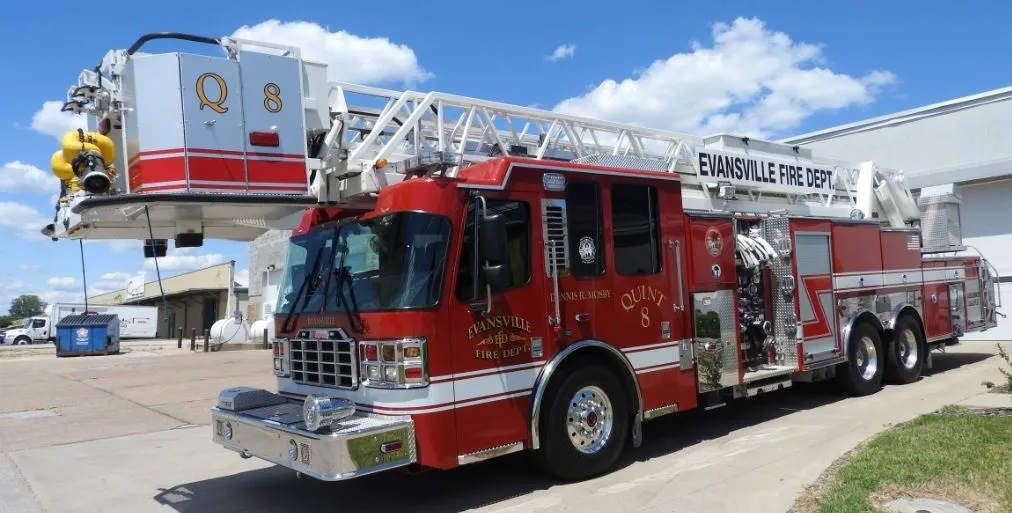San Antonio, Texas, is launching a new GPS-based bus rapid transit system (BRT) that keeps San Antonio’s new VIA Primo bus fleet on-schedule with minimal impact on individual traffic flow. Siemens Road and City Mobility business has worked together with Trapeze Group to create a new transit signal priority (TSP) solution that they say is the first of its kind to use a ‘virtual’ GPS-based detection zone for transit vehicle traffic management without the need for physical detector equipment at the intersectio
December 20, 2012
Read time: 3 mins
San Antonio, Texas, is launching a new GPS-based bus rapid transit system (BRT) that keeps San Antonio’s new VIA Primo bus fleet on-schedule with minimal impact on individual traffic flow.
189 Siemens Road and City Mobility business has worked together with 629 Trapeze Group to create a new transit signal priority (TSP) solution that they say is the first of its kind to use a ‘virtual’ GPS-based detection zone for transit vehicle traffic management without the need for physical detector equipment at the intersection. It allows the VIA Primo fleet’s on-board computer to automatically request a green light when the bus is behind schedule and approaching a busy intersection, improving travel times and getting passengers to their destinations faster.
San Antonio’s VIA Metropolitan Transit identified the need for a new BRT system but wanted to avoid adding new hardware on the street that would require construction delays and increased costs. The ‘virtual’ detection zones are installed digitally on city traffic servers, unlike most6865 BRT systems that use physical detector equipment hardwired to traffic controllers. The zones can be easily adjusted in response to changes in traffic flow due to special events or construction. The flexibility also means VIA and the city can add BRT lines around the region by simply creating a new route and configuring the new detection zones accordingly. This custom solution can be easily implemented in other cities across the United States.
“This solution allows riders to get to their destination on time, and it will ultimately encourage more usage of the bus system as reliability improves, reducing congestion and greenhouse emissions as people switch from car to bus travel,” said Frank LoPresti, vice president of Siemens Road and City Mobility business. “This solution can be implemented in any U.S. city and is a perfect example of how our new technology improves the quality of life of riders while avoiding expensive construction and traffic delays associated with installation. Siemens is excited to work with San Antonio to offer such innovative infrastructure improvements.”
The intelligent transportation system operates through Siemens NextConnect software and Trapeze Group’s currently installed GPS system. When a bus is in a virtual detection zone, the transit system sends a signal priority request to the Siemens i2 traffic management system. The request is relayed to the intersection traffic controller which requests the traffic system to provide a green light for the approaching transit vehicle.
“VIA has been a valued customer for more than 15 years, and they are an award-winning agency for good reason. Their systems and processes are state of the art, and their customer-centric focus is to be applauded,” stated John Hines, president of Trapeze Group. “VIA understands that utilising an enterprise solution such as Trapeze for their transit hardware and software enables them to provide these customer-centric processes and services, from real time information to advanced scheduling that provides better service and GPS technologies to know where the bus is at all times. The agency is a pioneer embracing technology systems and coming up with innovative ways to utilise Trapeze to the maximum benefit of both the agency and their customers.”
San Antonio’s VIA Metropolitan Transit identified the need for a new BRT system but wanted to avoid adding new hardware on the street that would require construction delays and increased costs. The ‘virtual’ detection zones are installed digitally on city traffic servers, unlike most
“This solution allows riders to get to their destination on time, and it will ultimately encourage more usage of the bus system as reliability improves, reducing congestion and greenhouse emissions as people switch from car to bus travel,” said Frank LoPresti, vice president of Siemens Road and City Mobility business. “This solution can be implemented in any U.S. city and is a perfect example of how our new technology improves the quality of life of riders while avoiding expensive construction and traffic delays associated with installation. Siemens is excited to work with San Antonio to offer such innovative infrastructure improvements.”
The intelligent transportation system operates through Siemens NextConnect software and Trapeze Group’s currently installed GPS system. When a bus is in a virtual detection zone, the transit system sends a signal priority request to the Siemens i2 traffic management system. The request is relayed to the intersection traffic controller which requests the traffic system to provide a green light for the approaching transit vehicle.
“VIA has been a valued customer for more than 15 years, and they are an award-winning agency for good reason. Their systems and processes are state of the art, and their customer-centric focus is to be applauded,” stated John Hines, president of Trapeze Group. “VIA understands that utilising an enterprise solution such as Trapeze for their transit hardware and software enables them to provide these customer-centric processes and services, from real time information to advanced scheduling that provides better service and GPS technologies to know where the bus is at all times. The agency is a pioneer embracing technology systems and coming up with innovative ways to utilise Trapeze to the maximum benefit of both the agency and their customers.”









